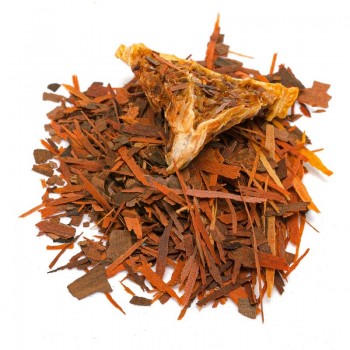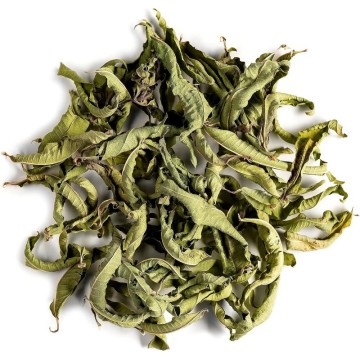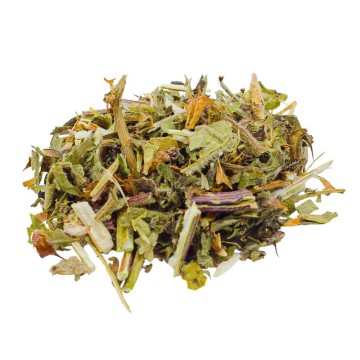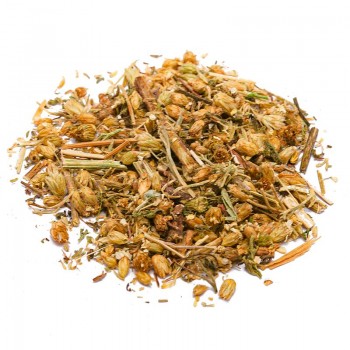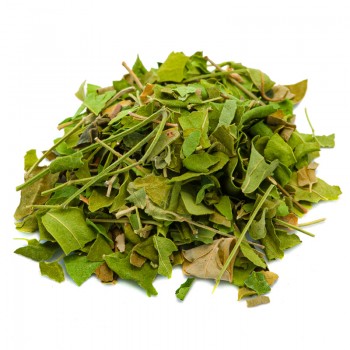St. John's wort, or St. John's wort, has been known since ancient times as a beneficial ingredient for infusions and herbal teas. Its properties range from counteracting irritation as a natural anti-inflammatory to the possibility of action on the nervous system.
Hypericum flowers: properties and benefits
For centuries folk medicine has used St. John's wort flowers to relieve irritation and inflammation, especially in the treatment of the airways and genitourinary tract.
For the well-being of the respiratory system, its antibacterial effects were studied, known in historical herbal medicine - in which St. John's wort was used as a healing and antiseptic.
The properties depend on a complex of substances, among which hyperforin stands out, present mainly in St. John's wort flowers.
The infusion of St. John's wort flowers is also known as a diuretic element, beneficial for soothing the symptoms of cystitis, or other irritation of the urinary tract.
Its diuretic qualities make St. John's wort able to reduce fluid retention, and release toxins from the body by increasing diuresis.
St. John's wort is also being studied as an aid in the treatment of depression and anxiety.
Regarding the actions that hypericum could carry out on the nervous system, several studies have investigated its properties to soothe states of anxiety, mood swings and low energy levels. < / p>
Although the mechanisms are not fully known, it seems that some chemicals contained in hypericum (hypericin, flavonoids and hyperforin), may interact with neurotransmitters (serotonin, dopamine and norepinephrine).
These interactions help improve and regulate mood, facilitating proper functioning of the nervous system.
The activity of hypericum on the nervous system also makes it excellent for soothing the symptoms of irritability and fatigue of PMS. In addition, its anti-inflammatory properties further help to calm abdominal cramps and irritation of the uro-genital tract.
In some cases, the herbal tea cut flowers are useful for an infusion that relieves the after-effects of alcohol excess, to be taken after meals to purify the body. < / p>
Origins and History of cultivation
This plant, present for over 2000, is native to Asia and Europe. Today it is also commonly found in North America, Africa, India and Australia.
It has been known for its healing benefits since the 5th century BC, widely used in ancient Greece and then in the Roman world. Ancient herbalists like Pliny and Hippocrates recorded its medicinal value, and we know that it was used in the form of tablets, decoction and herbal tea to treat various health problems.
In the Middle Ages it was also called St. John's wort, as well as being called Hypericum, because usually the flowering and harvesting occur in conjunction with the feast of St. John the Baptist, on June 24 . The other name was scacciadiavoli, due to its soothing properties.
The name hypericum is derived from the Greek hyper, which means above, and the word eikon, or image. Because bouquets of this plant were hung above the sacred images, in order to ward off evil spirits from the houses.
Over time, with its essential elements and minerals, St. John's wort has gained popularity for relieving inflammatory states, as an emmenagogue and anti-depressant.
The plant grows well in the wild, but is often cultivated and then used in herbal remedies. In particular, from the Renaissance onwards, St. John's wort oil was used to treat wounds and bruises, as an antiseptic and healing agent.
Hypericum is also called red oil herb, because some active ingredients (hyperforin and hypericin) are responsible for this oil color.
In the 19th century, however, it was used extensively to treat urinary problems, nervous imbalances and diarrhea.
We know that some species of St. John's wort were also used by Native Americans, who also used St. John's wort as a febrifuge, as a cough medicine, and its root as a remedy for snake bites.
<h2 style = "text-
align: justify; "> Plant and flowers
The hypericum plant is Hypericum perforatum, a small biennial plant that belongs to the Clusiaceae family.
It stands about 2 feet tall, with erect, branching stems at the top, and exhibits small, oval hypericum leaves. Above they show some small points visible against the light, which constitute secretory glands; hence the perforatum attribute.
The flowers of hypericum are collected in clusters, appear small and yellow, composed of five petals and numerous stamens. Some parts are deep red and, if rubbed between the fingers, they stain the skin with this color. The fruit of the hypericum is an oval.
The plant grows in sunny areas and preferably on uncultivated fields, along the edges of the roads.
The flowering tops of St. John's wort are used fresh when they are harvested shortly after flowering, or they are dried. Otherwise, they are found in the form of extract useful for phytotherapy, herbal medicine and cosmetics.
Nutritional values of hypericum
The constituents of this plant, include some substances such as anthraquinone derivatives (naphthoadiantrones such as hypericin), flavonoids ( kaempferol, quercetin), flavones (luteolin), glycosides (hyperside, isoquercitrin and rutin), tannins and volatile oils.
The most interesting isolated antibacterial principle is a tetrachetone, hyperforin, also believed to be responsible for the antidepressant activity of hypericum.
How to use the ingredients in St. John's wort tea
The ideal herbal tea can be reached by putting the infusion of St. John's wort leaves and flowers in a cup (250 ml), approximately 3-5 grams, with water at 100 ° C. Leave to infuse for 7 to 8 minutes, before drinking the herbal tea.
St. John's wort herbal tea: side effects and contraindications
When taken in high doses, hypericum interacts with SSRI drugs (selective serotonin reuptake inhibitors) and MAO inhibitors (monoamine oxidase). It can lead to an increase in blood pressure and could induce serotonin syndrome.
Symptoms can be confusion, fever, agitation, rapid heartbeat, anxiety, chills, sweating, diarrhea and muscle spasms.
It could also interact with oral contraceptives and anticoagulants; if you are being treated with these medicines, it is good to ask a specialist for advice.
Furthermore, this plant can have a photosensitizing action on the skin, and can cause redness and burning reactions when exposed to UV rays.
Pregnant or breastfeeding women should avoid taking St. John's wort.

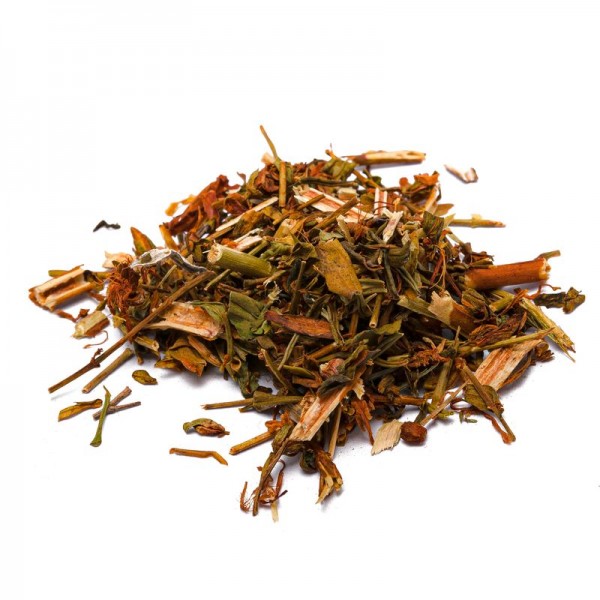









 No reward points for this product.
No reward points for this product.

